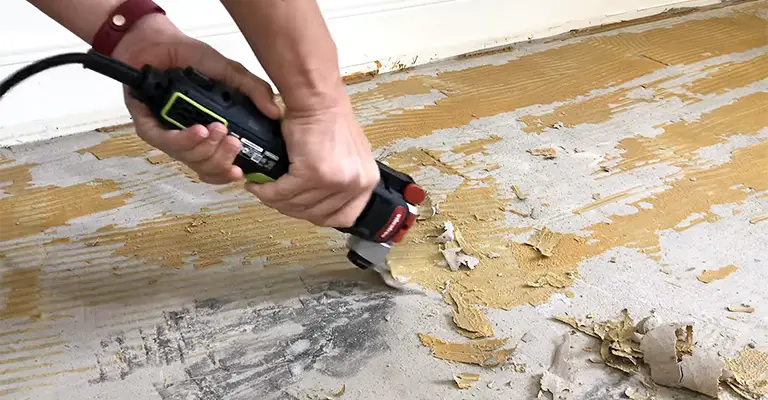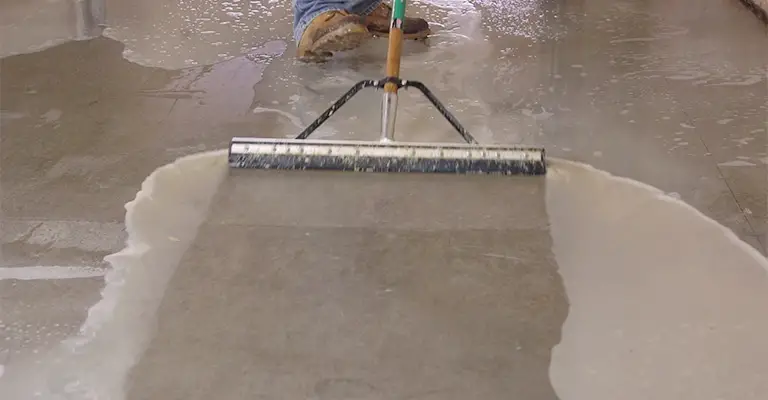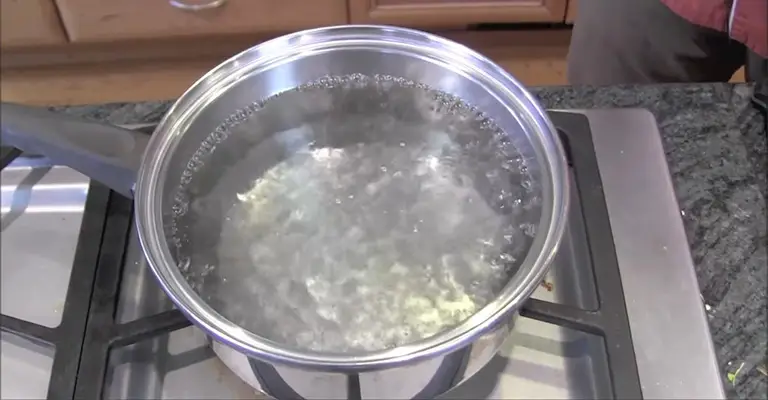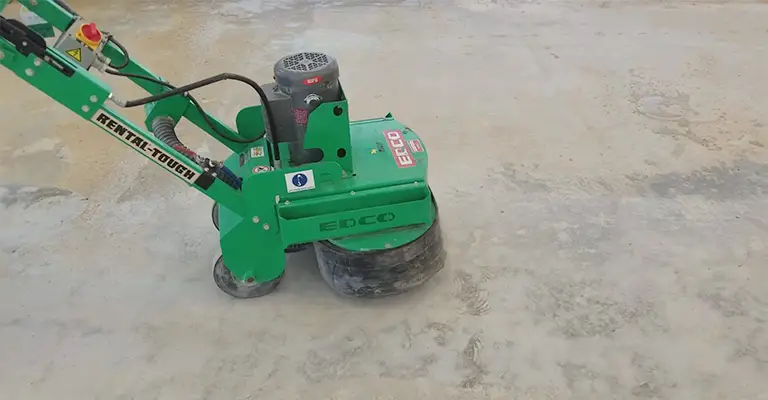A power washer could remove carpet glue from concrete, but it is not guaranteed to work. The effectiveness of a power washer will depend on the machine’s strength, the water pressure, and the type of glue used to install the carpet.
If you decide to use a power washer to remove carpet glue from concrete, it is important to start with a low-pressure setting and gradually increase the pressure as needed.
Keep the nozzle at least 6 inches from the surface to avoid damaging the concrete. You may also want to try using a detergent or a commercial carpet glue remover to help loosen the glue before using the power washer.
It is worth noting that using a power washer can be labor-intensive and may require multiple passes to remove all of the glue.
If the glue is particularly stubborn or the power washer is ineffective, you may need to use a more aggressive method, such as scraping or sanding, to remove the remaining glue.
It is possible to remove a thin layer of concrete from under the glue by using a strong washer. A commercial pressure washer at the low end may be unable to lift some glues without impractical tiny nozzles.
Alternatively, if the concrete is soft and mastic or glue deposits have hardened, one of the large units with diesel-burning heat should be able to dissolve them.
You might be able to facilitate the pressure removal by applying a material that etches the concrete under the bonded area if you have no concerns about the surface finish.
How Do You Dissolve Carpet Glue On Concrete?

Removing that dried-on gunk can be a big undertaking, especially if the glue has been there for years. But if you plan to color the concrete with a stain or dye, it’s necessary to ensure uniform and complete color penetration.
You can successfully remove glue from a concrete floor using the right tools and methods. The type and amount of glue you encounter, and the size of your floor will affect your chosen strategy.
You can usually remove glue from small residential concrete floor surfaces with hard work and perseverance.
1. Apply A Glue And Mastic Remover

Then use eco-friendly mastic removers formulated specifically for removing old adhesive from concrete floors if scraping and hot water don’t work.
They’re safe indoors because they have low odor and volatile organic compounds. Moreover, they soften and emulsify carpet glues and tile mastics, even solvent-based ones.
It’s usually applied with a pump-up sprayer or brush, then left to sit until the mastic softens and can be scraped off.
Depending on the thickness of the glue or mastic buildup, you might need to do this for 45 minutes to several hours. Using a brush, mop, or rotary floor scrubber, remove the remaining residue once most of the glue has been removed.
Tip: When purchasing an adhesive remover, read the container label carefully to know what substances it works on. For the removal of glue and mastics, you shouldn’t use strippers intended for removing paint from concrete.
To ensure that the adhesive remover you intend to use will not damage the concrete or prevent stain penetration, test a small area of the floor with the remover before applying it to the entire floor.
2. Boil Some Water

Alternatively, if the glue is water-based, you could boil water and apply it to the dry glue to soften it. In addition to being chemical-free, this method is worth a try as long as you ensure not to splash anything onto yourself while pouring the hot water onto the floor.
Using a rotary floor scrubber or scraper, scrub the glue off before it cools and after the water softens it for a few minutes.
Using hot water mixed with vinegar or citrus-based cleaners has been claimed to remove carpet glue from concrete, but these solutions can etch the concrete’s surface and react with the glue.
3. Grab A Scraper
When disposing of the glue remaining on the concrete subfloor, it’s often possible to use a long-handled floor scraper.
Scraper blades must be handled carefully to prevent gouging or scratching the floor surface. While this step may not remove every bit of glue from the concrete surface, another method will make removing the remainder easier.
4. Use Mechanical Methods

You may resort to mechanical removal if chemical strippers fail to remove glue and mastics even after repeated attempts.
For the main area of the floor, use a floor sander or buffer fitted with a sanding disk, and along the walls and in the corners, use a handheld grinder.
The best and fastest way to remove glue residue from large floor surfaces is by using this method. When you sand or grind concrete too aggressively, the aggregate can be exposed, and swirl marks are left in the concrete.
Moreover, it can remove a layer of cement paste from the surface, resulting in a different reaction between the stain and cement paste.
Tips:
When polishing concrete rather than staining it, grinding off the adhesive or mastic rather than using a chemical stripper can be a great option. You should, however, make sure you use tools specifically designed for grinding.
To avoid getting the mastic stuck to the diamonds, you cannot use the same diamond abrasives you use to polish diamonds.
Given some concrete grinding machines’ aggressive nature, this is a job best handled by a professional with experience using the equipment and an understanding of how to use the appropriate abrasive attachments.
Final Tips
Especially when trying to remove something sticky from concrete, you need to consider how much pressure you will use. Concrete’s surface will be eroded if you don’t use a commercial pressure washer carefully.
You may need to use some material to loosen gunk, depending on what you’re removing. When cleaning, it’s impossible to use high-pressure and hot water without damaging the surface underneath.
For that reason, if you have a mess you need to be cleaned up, hire a pressure-washing company with a lot of experience.






